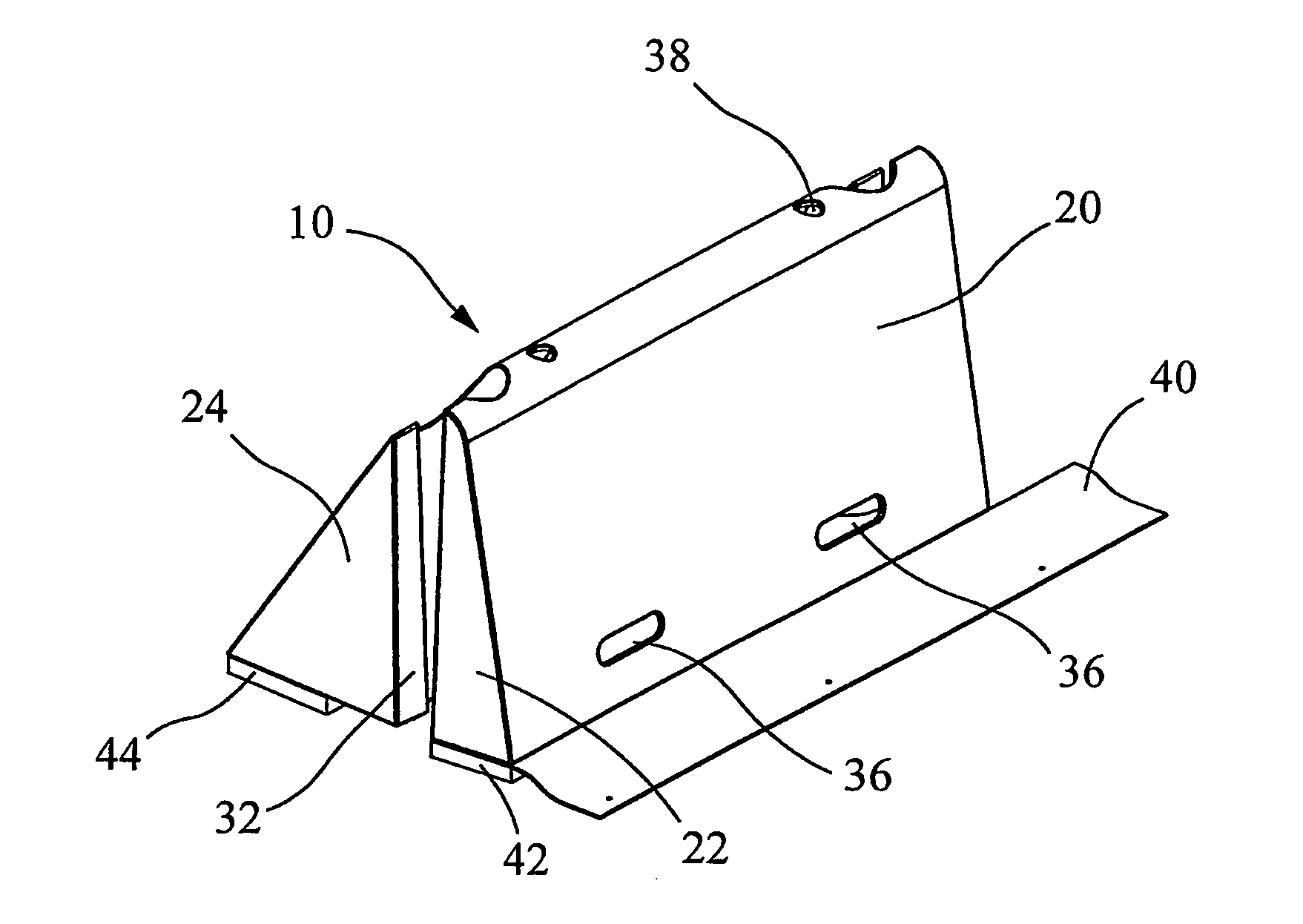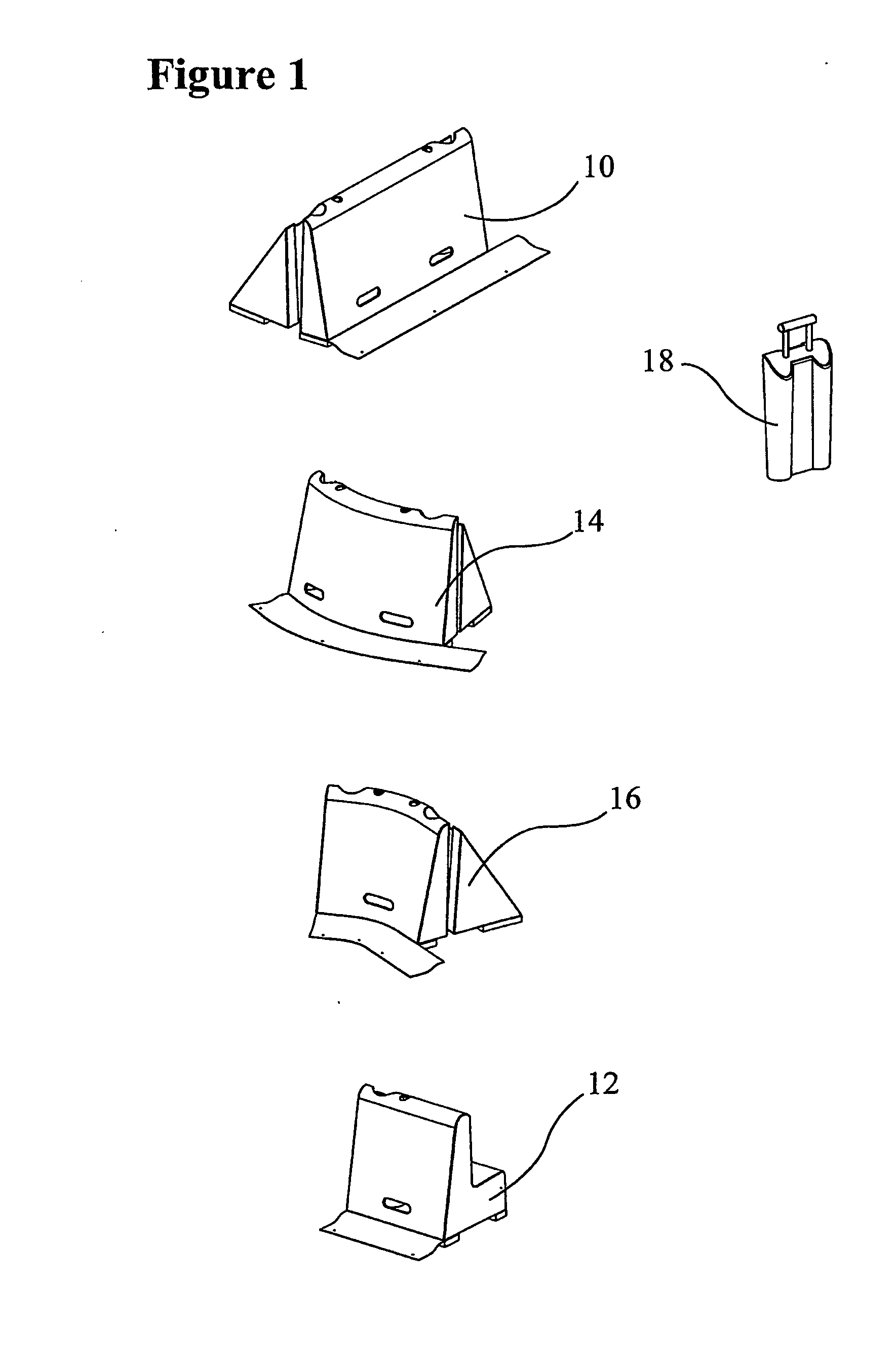Self-Filling Modular Barrier
- Summary
- Abstract
- Description
- Claims
- Application Information
AI Technical Summary
Benefits of technology
Problems solved by technology
Method used
Image
Examples
Embodiment Construction
[0033]FIG. 1 is a general view of the major components that may be used to form a flood barrier according to the invention. These include a straight modular unit 10 shown in front and rear oblique views, a shorter or “spanning” modular unit 12, an inwardly-facing curved modular unit, an outwardly-facing curved modular unit 16 and a tapered universal key 18 for connecting adjacent units together. The units may be assembled together end-to-end to create a barrier to water ingress e.g. as a flood defense, for water containment e.g. to create a pool or pond and as a linear barrier e.g. to span a gap in a wall, in the latter case a small number of sandbags being used to provide a water-tight connection at either end of the barrier.
[0034]In one embodiment, which will be described in detail below, the barrier has a height of 500 mm, but it will be appreciated that other dimensions are possible, e.g. an overall height of 1 meter.
[0035]The modular units used in the present flood barrier may ...
PUM
 Login to View More
Login to View More Abstract
Description
Claims
Application Information
 Login to View More
Login to View More - R&D
- Intellectual Property
- Life Sciences
- Materials
- Tech Scout
- Unparalleled Data Quality
- Higher Quality Content
- 60% Fewer Hallucinations
Browse by: Latest US Patents, China's latest patents, Technical Efficacy Thesaurus, Application Domain, Technology Topic, Popular Technical Reports.
© 2025 PatSnap. All rights reserved.Legal|Privacy policy|Modern Slavery Act Transparency Statement|Sitemap|About US| Contact US: help@patsnap.com



